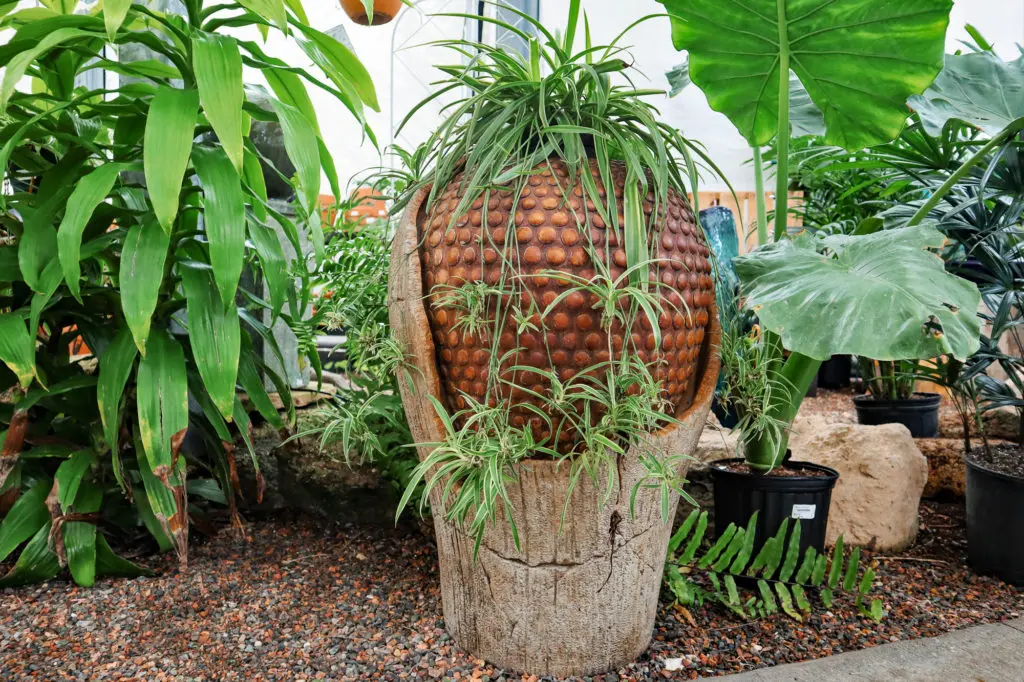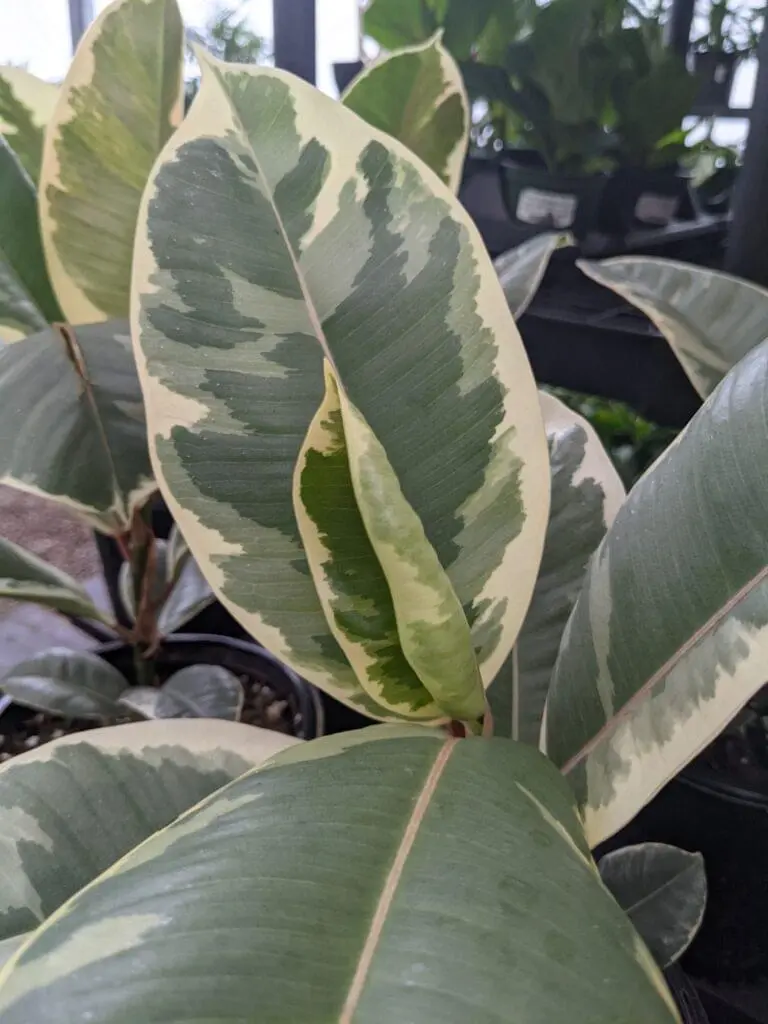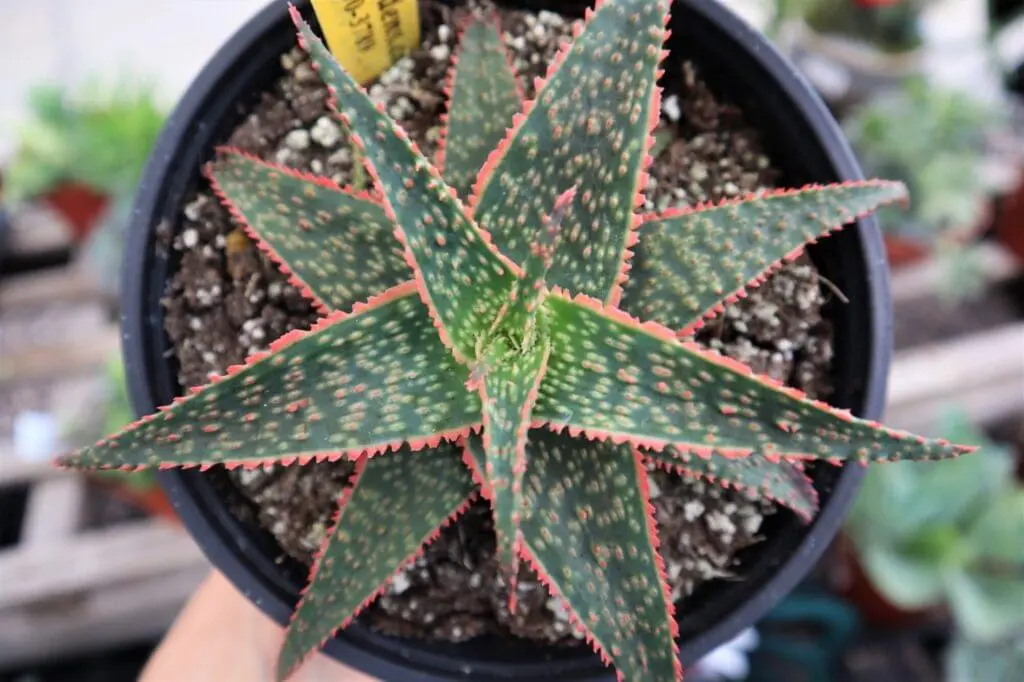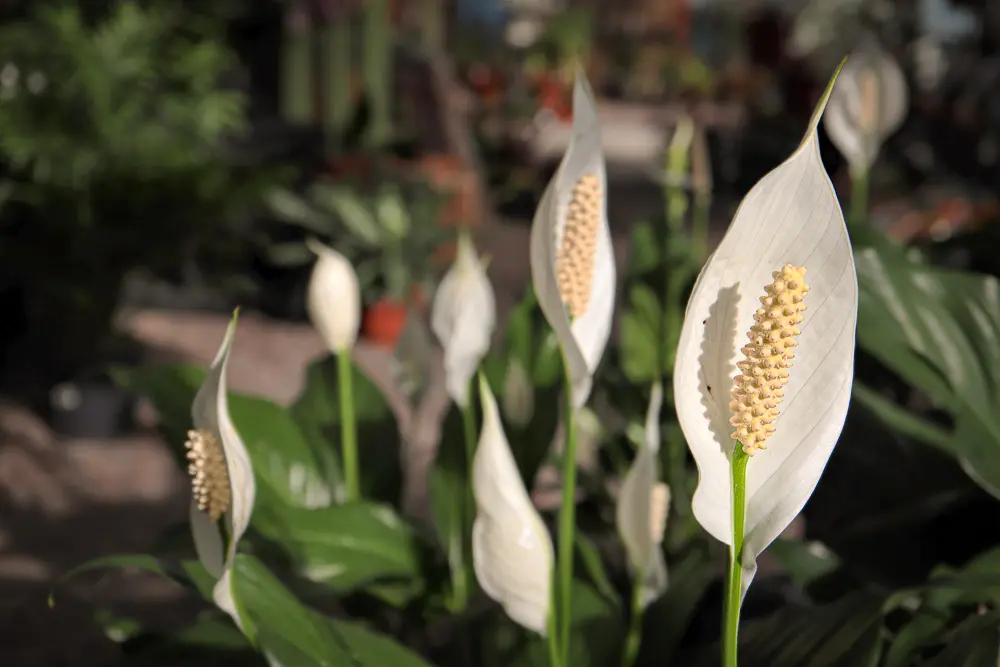by Amanda Rose Newton
Just like pets, houseplants require a set routine of care and attention. We become enamored and attached to both, and they become part of our households. Unlike your pets, your house plants may chip in with chores every once in a while in the form of adding oxygen to your air. While science hasn’t quite made up its mind as to the overall ability of plants to “detox” or “filter” the air, they certainly do put oxygen back into it through the act of photosynthesis.
1. Spider Plant (Chlorophytum comosum)

Spider plant adds a pop of intrigue and happens to be great for beginners as it is user-friendly. Give it bright, indirect light and water when it needs it and it’ll be happy. It also produces baby spider plants that are easy to root in water or soil and give as gifts to friends, or to populate your home for your own air quality science experiment. No judgments here.
2. Snake Plant (Dracaena trifasciata )
If you or someone you know can not keep plants alive, I challenge you to a snake plant. Snake plants can live off neglect for a while before showing signs of stress (I once forgot to water one for upwards of 9 months and it’s fine- do not try this at home), so it’s fairly foolproof. It’s also great if you happen to go out of town often. You will be welcomed back into the literal fresh air!
3. Rubber Tree (Ficus elastic)

Rubber trees are a friendlier version of the ficus (looking at you, fiddle leaf!) and just as lovely. Those large, luscious leaves are also great for pumping out oxygen. As a general rule, more air cleaning and oxygen with happen with plants with larger leaves, which is the case here. Just keep in mind these guys can get 8 feet tall, even inside.
4. Bromeliads (Bromeliad sp.)
Any will do! These plants also thrive without much input, provided they are kept in similar lighting to where they were purchased. They also love to be misted, if you feel giving them extra attention. Just beware that they get used to it, and will miss their weekly mistings!
5. Pothos (Epipremnum aureum)
Pothos may not have the biggest leaves in the yard but it makes up for that in sheer surface area ratio! This means they are able to rival rubber trees in their oxygen production power. They also thrive in a variety of spaces. While they do not need bright light, they tend to do best in at least indirect light. A bookshelf, a countertop, or hung from the ceiling, there are few spaces not appropriate for a pothos to go.
6. Calathea (Calathea sp.)
Calatheas, of which there are many species in many colors/patterns, are a great choice for adding a dose of clean air. Like the bromeliads, these guys need a bit of extra humidity than most homes have to offer so a weekly misting is a nice gesture. They can be a bit finicky about the water they receive, so if you notice browning on the edges, avoid tap water. Pro tip: You can leave the tap water on the counter for a few hours to have the chlorines, etc. evaporate off.
7. Aloe Vera

Aloe vera is already a workhouse in your home, offering solutions for sunburns and delicious juice. It also gives off its fair share of oxygen, despite its slow growth cycle. Aloe Vera is also easy to care for and does not need much from you outside of being watered once every two weeks.
8. Peace Lily (Spathiphyllum sp.)

The peace lily is a great choice to have for a variety of reasons, and probably not the first that comes to mind for an oxygen producer. It also has a lot of plant personality, from its stylish looks to the diva-like dramatic wilt it does when underwatered.
9. Lady Palm (Rhapis excelsa)
If you want something more tropical and lusher, lady palms offer oxygen-producing powers at a larger height. These majestic plants also do not need bright light and are less sensitive to drafts than other palms sold as indoor plants.
10. Money Plant (Pilea peperomioides)
For those short on space, a money plant still offers an adequate surface area for oxygen production. It is sized appropriately for windowsills, cubicles, or bedside end tables. It also happens to be known for bringing good luck and positivity.
It should be noted that many houseplants are not as friendly to your pets as they are to you. Make sure you double-check before bringing one home that it is pet friendly.


